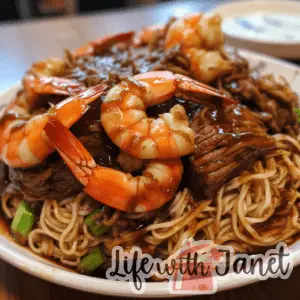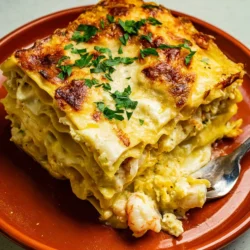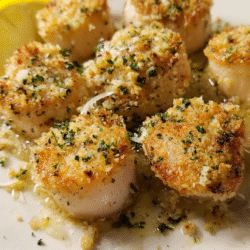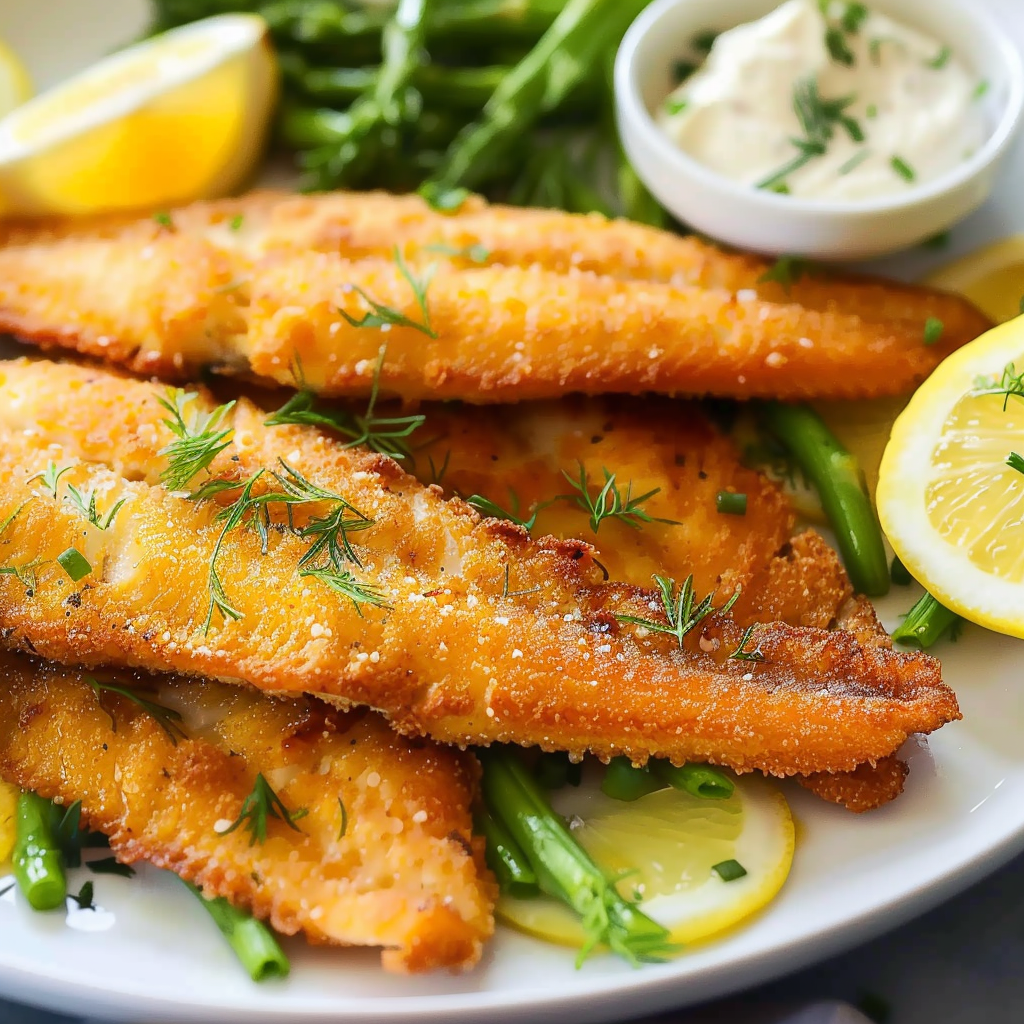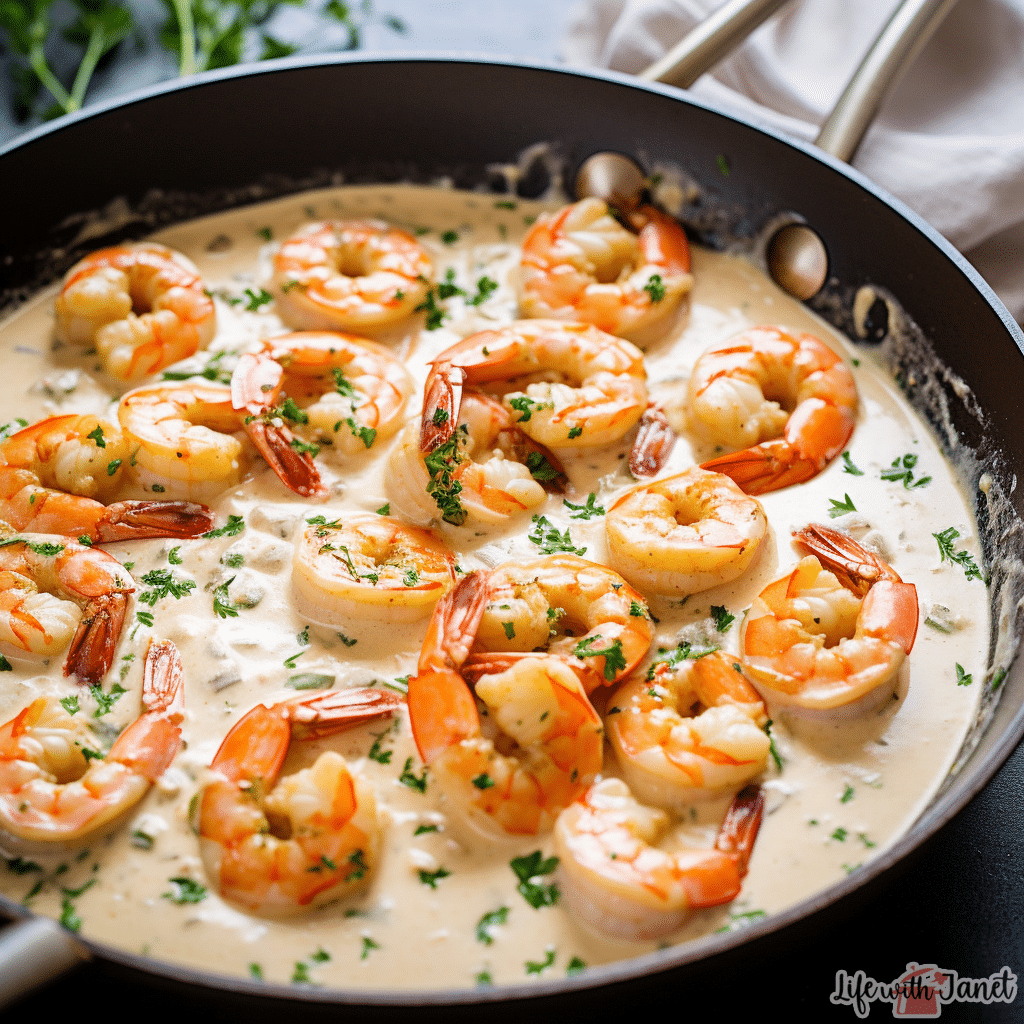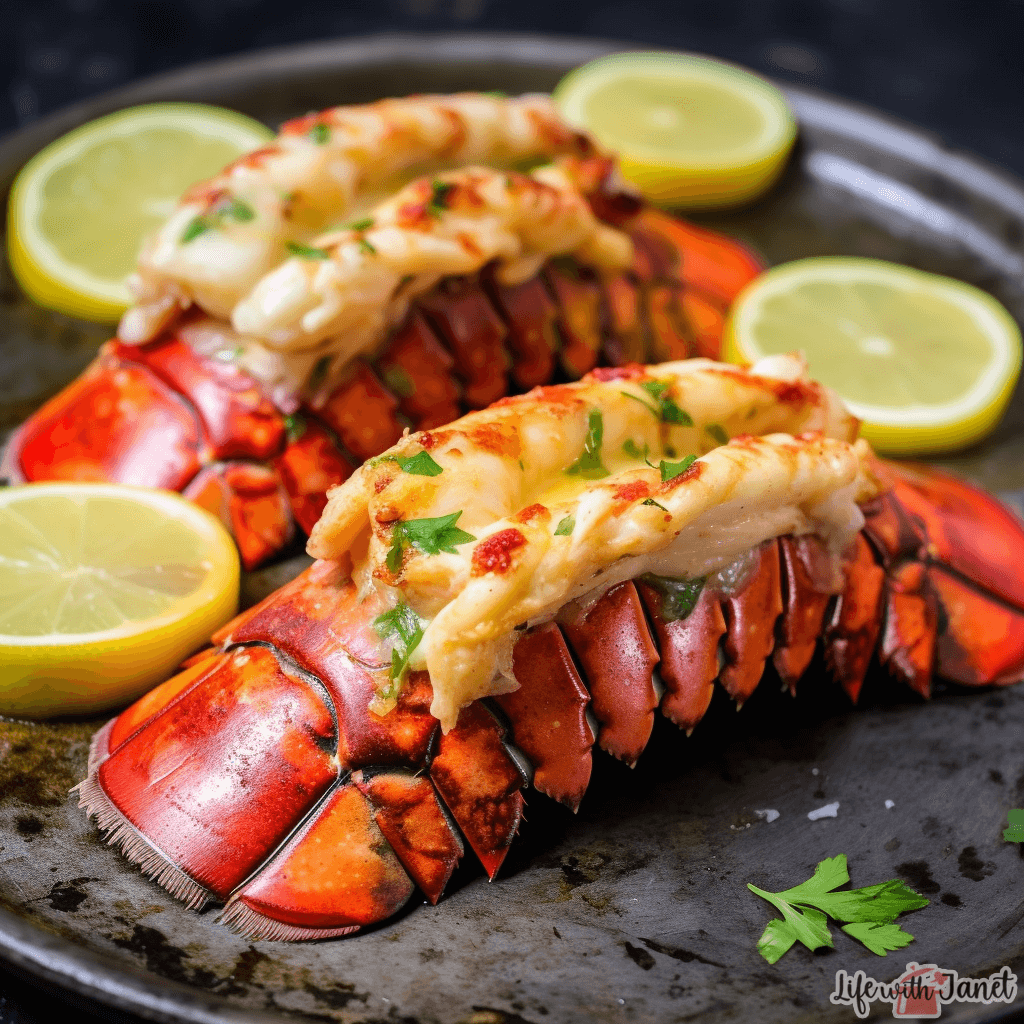WANT TO SAVE THIS RECIPE?
How can I enhance the flavor profile of the teriyaki sauce in the dish?
Teriyaki sauce, a symphony of sweet and savory, is the soul of the “Steak and Shrimp Teriyaki Noodles.” But what if you’re chasing a richer dimension? Delve into these tweaks.
First off, quality matters. Opt for a premium soy sauce—preferably one that’s aged. It imparts depth and an umami punch that supermarket brands might miss.
Ginger. Oh, ginger! Freshly grated ginger can elevate the sauce from good to sublime. Its zesty bite marries perfectly with the sweet and salty profile of teriyaki.

Mirin, a sweet rice wine, adds complexity. If your sauce lacks that unique tangy sweetness, a splash of Mirin can set things right. Just ensure you simmer the sauce well to cook off the alcohol.
For a smoky undertone, consider a touch of toasted sesame oil. Not only does it add a nutty flavor, but its aroma is downright intoxicating.
Lastly, a non-traditional but game-changing ingredient is a hint of citrus. A squeeze of lemon or orange can introduce a refreshing note, breaking the monotony of sweet and salty.
Experiment, taste, and adjust. A stellar teriyaki sauce can transform the dish into an unforgettable culinary experience.
Can the dish be made gluten-free without compromising the taste?
Ah, gluten-free! Many wonder if going gluten-free means compromising on taste, especially with dishes that traditionally use soy sauce. Let’s bust that myth.
Your first ally is gluten-free soy sauce. Available in most stores these days, this variant retains the depth and umami without the wheat. It’s a straightforward swap!
Next, the noodles. Many Asian noodles, like rice noodles or mung bean vermicelli, are naturally gluten-free. They also have unique textures that can add a fun twist to the dish.
What about teriyaki sauce? Well, most teriyaki sauces use soy as a base, so by swapping it with gluten-free soy sauce, you’re golden. However, always check labels if you’re buying store-bought versions.
Cornstarch, often used to thicken the sauce, is gluten-free. But here’s a tip: arrowroot powder can be a fantastic substitute. It gives a glossy finish to the sauce, making your dish look restaurant-grade.
In essence, going gluten-free doesn’t mean sacrificing flavor. With the right substitutes, your “Steak and Shrimp Teriyaki Noodles” can be just as delightful, if not more!
Which noodles best complement the Steak and Shrimp Teriyaki?
Noodles, the bedrock of our beloved dish. But with a plethora of choices, which one truly shines?
For authenticity, Udon is a top contender. Thick, chewy, and with an inherent sweetness, Udon pairs like a dream with the robust flavors of steak and shrimp.
But don’t snub the Ramen! Not the instant kind, but fresh Ramen noodles. They’re springy and absorb the teriyaki sauce beautifully, ensuring each bite is a flavor bomb.
If you’re veering towards Italian meets Asian fusion, Spaghetti can be surprisingly complementary. Its firm texture holds up well against the juicy steak and succulent shrimp. By the way, have you tried One Pan Shrimp Fettuccine Alfredo from my blog? A divine blend of flavors!
Rice noodles, light and gluten-free, can be another option. Especially if you’re aiming for a lighter version of the dish.
At the end of the day, noodles are a personal choice. Whether you’re an Udon enthusiast or a Ramen lover, ensure they’re cooked al dente. After all, the perfect noodle texture can elevate the entire dish!
How can I ensure that both the steak and shrimp are cooked perfectly?
Perfectly cooked steak and shrimp in the same dish can seem daunting, but fret not! Achieving that melt-in-your-mouth steak and succulent shrimp is doable with a bit of finesse.
For the steak, remember the cut matters. Opt for tender cuts like sirloin or rib-eye. Marinate them for at least an hour to tenderize and infuse flavors. When cooking, ensure your skillet is sizzling hot. Sear the steak quickly to lock in those juices, but avoid overcooking. A medium-rare to medium steak usually does the trick, ensuring it remains juicy.
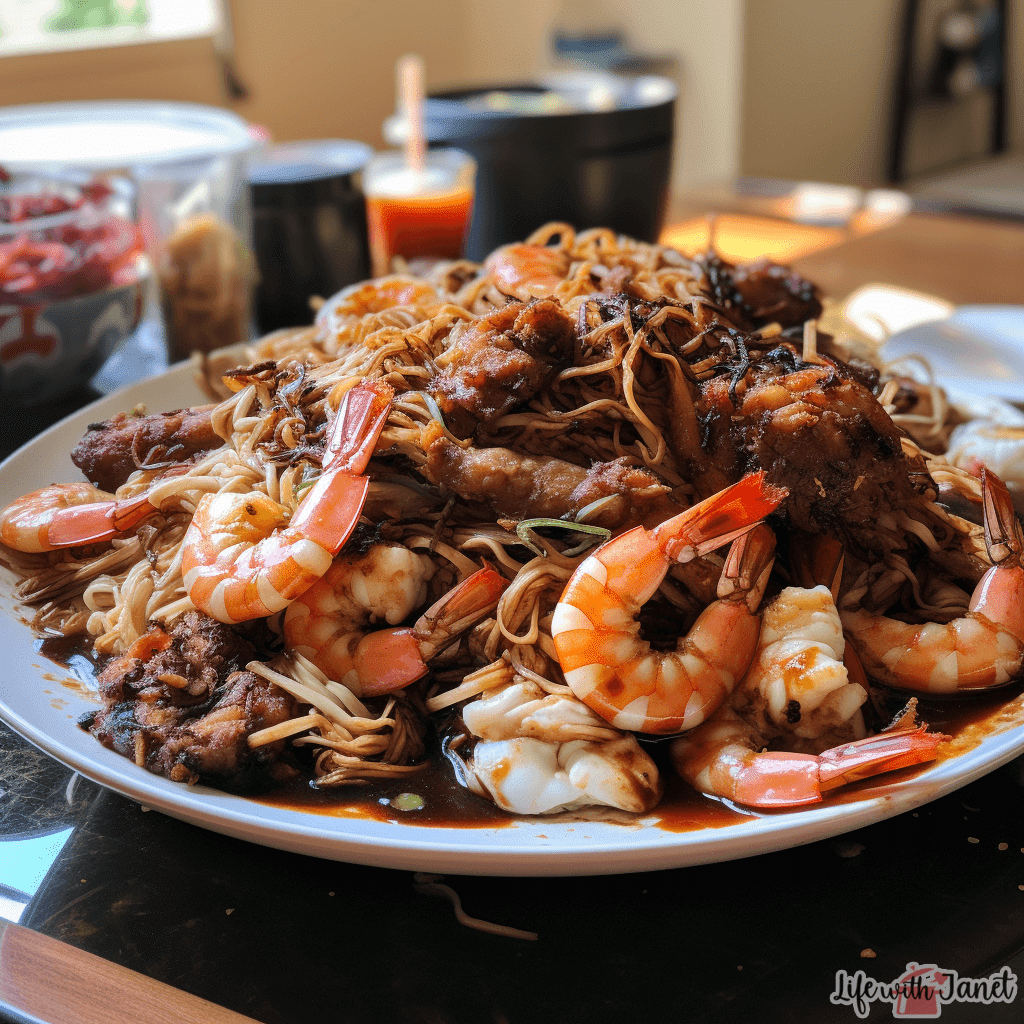
Shrimp, however, is a different ball game. Overcooked shrimp can become rubbery. The key is to watch for color. Once they turn opaque with a nice pink hue, they’re done. Typically, this is a matter of minutes. Also, consider tail-on shrimps. The tail can act as a little handle, ensuring even cooking.
Layering is essential. Cook the steak first, set it aside, and then sauté the shrimp. This allows each protein to cook in its optimal environment without affecting the other.
Lastly, a resting period is crucial, especially for the steak. Let it rest for a few minutes after cooking. This lets the juices redistribute, resulting in a moist, flavorful bite.
Can this dish be made in advance and reheated without losing flavor?
Planning a dinner party or merely prepping for the week ahead? Wondering if our “Steak and Shrimp Teriyaki Noodles” can take a rain check? Well, the answer is a hopeful yes with some caveats.
The noodles, once combined with the teriyaki sauce, can get a tad mushy if left to sit for too long. If you’re prepping ahead, consider storing the sauce and noodles separately. When ready to serve, a quick toss in a hot skillet can revive the dish’s freshness.
Steak and shrimp can be marinated in advance, even frozen. However, cooking them in advance is a slippery slope. Reheating might overcook the proteins. A workaround? Partially cook them, especially the shrimp. When reheating, they’ll finish cooking without becoming overdone.
For that restaurant-fresh vibe, consider reheating on the stovetop rather than the microwave. The controlled heat ensures even reheating without drying out the dish.
Remember the garnishes! Freshly sliced green onions or a sprinkle of toasted sesame seeds right before serving can refresh the dish, making it taste just-made.
Steak & Shrimp Teriyaki Noodles
Ingredients
- 1 lb. fresh shrimp peeled & deveined
- 1 lb. steak bite-sized chunks
- Carbs:
- 1 lb. spaghetti noodles perfectly cooked & drained
- Sauces & Oils:
- 2 Tbsp. virgin olive oil
- 2 tsp. aromatic sesame oil
- ⅓ C. authentic teriyaki sauce
- 2 Tbsp. soy sauce
- 2 tsp. garlic finely minced
- ½ medium-sized onion finely sliced
- ¼ C. green onions freshly chopped (for garnishing)
- Salt pepper, and other preferred spices
Instructions
- Warm up the olive oil in a skillet over a medium-high flame.
- Toss in the steak chunks. Season them generously with salt, pepper, and your choice of spices.
- Halfway through, introduce the onions. Continue sautéing until the onions are translucent and the steak reaches your desired doneness. Once done, keep them aside.
- In the same skillet, sauté the shrimp. Season them well and cook until they adopt a pinkish hue. Once cooked, set them aside as well.
- Drizzle the sesame oil into the skillet. As it heats, infuse it with the minced garlic, sautéing for a brief 30 seconds.
- Gracefully pour in the teriyaki and soy sauces, stirring them together.
- Introduce the noodles into this mix, ensuring they’re well-coated with the sauces.
- Return the steak and shrimp to the skillet, mixing everything for a harmonious combination.
- As a finishing touch, sprinkle chopped green onions atop.
- Serve immediately and savor the East in every bite!

